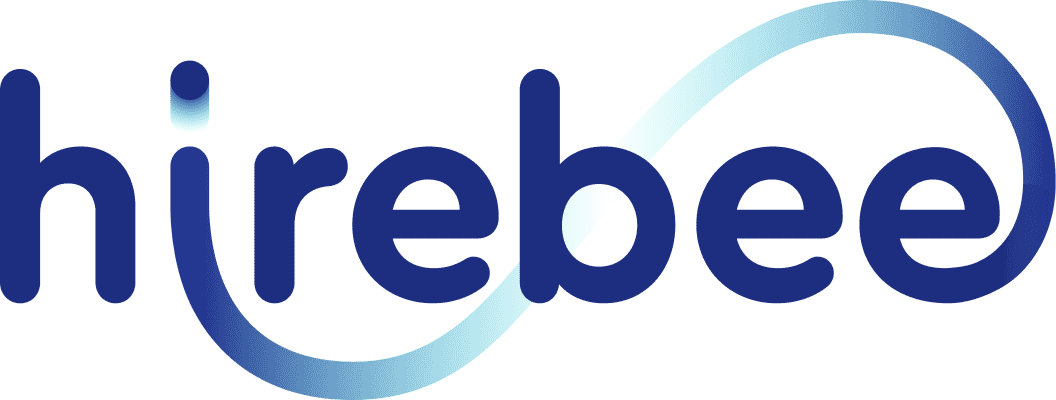A Job Application Form is a document that employers use to collect information from candidates interested in applying for a job position. It serves as an official tool for job seekers to submit their personal details, qualifications, work history, and other relevant information in a structured format. Unlike a resume or CV, which candidates often design themselves, the job application form is standardized, ensuring that employers receive the same type of information from every applicant. This allows employers to efficiently compare candidates and evaluate their suitability for the role based on specific criteria.
The job application form plays a critical role in the recruitment process as it not only helps employers gather necessary information but also provides an opportunity for them to assess how well candidates follow instructions and present themselves in a professional setting. While it may seem like a straightforward part of the hiring process, the design of the form can significantly impact both the candidate experience and the effectiveness of the recruitment process itself.
Table of Contents
ToggleHow to Fill Out a Good Job Application Form
A good job application form should include sections for basic personal information, contact information, education, employment history, skills, and references. It should be easy to follow and clearly label each section.
- At the top of the form, employers should include a space for basic personal information such as name, address, and phone number. This allows employers to quickly identify candidates and contact them if needed.
- The contact information section should include the candidate’s email address and other contact information the employer may need to get in touch.
- The education section should allow the candidate to provide information about their educational background, including the schools attended, degree attained, and any additional training or certifications.
- The employment history section should include a list of past employers, the candidate’s job title, dates of employment, and a description of duties performed. This section should also allow the candidate to provide information on any gaps in employment.
- The skills section should allow the candidate to provide information on any special skills or qualifications they possess which may be relevant to the job, such as computer programming, foreign language proficiency, or other specific skills.
- Finally, the references section should provide space for the candidate to list the names and contact information of their references. This information can then be used to verify the accuracy of the candidate’s job application.
Additionally, some job application forms may ask for consent to conduct background checks. By taking the time to create a well-structured job application form, employers can ensure they receive all the necessary information from applicants to make an informed hiring decision.
Different Types of Job Application Forms
There are different types of job application forms, such as a paper form, an online form, an email form, and an attached CV.
Email Applications
Email applications offer a convenient way for job seekers to submit their new job application form directly to employers. Unlike structured online forms, this method allows candidates to tailor their applications by attaching resumes, cover letters, and other relevant documents. Many companies, particularly small businesses, prefer email applications as they provide a direct line of communication without requiring specialized recruitment software. However, larger organizations often rely on recruitment software enterprise solutions to efficiently manage high volumes of applications and streamline their hiring processes. A well-crafted email application should include a clear subject line, professional formatting, and all necessary details to make a strong impression.
However, email applications can be challenging to organize compared to a basic job application form submitted through an applicant tracking system. Since hiring managers receive numerous emails, poorly formatted applications may be overlooked. To improve their chances, applicants should follow company guidelines, use professional email etiquette, and ensure all attachments are correctly labeled. Employers can also optimize this process by using dedicated email folders or automated responses to confirm receipt, making email applications a structured and effective hiring method.
Online Applications
Online applications have revolutionized the hiring process by making it easier for both employers and job seekers to submit and review job applications digitally. Unlike traditional paper-based methods, an employment application form can now be completed and submitted online through company websites, job boards, or applicant tracking systems (ATS). This digital approach streamlines the process, reducing paperwork and allowing employers to quickly sort, filter, and evaluate candidates based on their qualifications. It also improves accessibility, enabling job seekers to apply from anywhere at any time, making the recruitment process more efficient and inclusive.
Additionally, online application forms often come with built-in features such as autofill options, resume parsing, and pre-screening questions to enhance candidate evaluation. Employers can customize these forms to include specific fields relevant to their industry, ensuring they collect the most valuable information. For job seekers, online applications provide the advantage of tracking submissions, receiving automated status updates, and uploading multiple documents. As businesses increasingly rely on digital hiring methods, online applications continue to evolve, making recruitment faster, more organized, and highly effective.
Paper Applications
Paper applications are a traditional method of collecting candidate information, often used by businesses that prefer physical documentation or have in-person hiring processes. Unlike an online job application form, a paper application requires job seekers to manually fill out their details, including personal information, work history, and references. Many small businesses, retail stores, and organizations with limited digital access still rely on this method. While paper applications may take longer to process, they provide a tangible record and can be useful for companies that prioritize face-to-face interactions in hiring.
One drawback of these paper application forms is the increased administrative work required for sorting, reviewing, and storing applications. Unlike digital forms, they cannot be automatically filtered or searched, making the process more time-consuming for recruiters. However, they can be beneficial in environments where applicants may not have easy access to the internet or where employers prefer a more personal hiring approach. Despite the shift toward digital recruitment, paper applications remain relevant in certain industries and hiring scenarios.
Benefits of Creating an Employee Application Template
With a well-designed template, organizations can quickly evaluate potential hires while reducing administrative work. Below, we’ll explore the specific benefits of creating an employment application form template.
Hiring Skilled Professionals
An employment application form template helps employers quickly identify skilled professionals by ensuring that all essential qualifications are clearly outlined. By customizing the form to include sections focused on education, certifications, and relevant work experience, employers can more easily spot candidates with the necessary expertise. The template can also be tailored to focus on specific industry-related skills, making it an effective tool for hiring individuals who possess the right qualifications for specialized roles.
Attracting Entry-Level Applicants
For entry-level positions, an employee application template can provide a simple and user-friendly format that encourages more candidates to apply. A clear and easy-to-follow form helps potential applicants feel more confident in submitting their information, especially those who may be new to the job market. The template can be designed to include basic questions, making it approachable for individuals with less experience, and encouraging a broader pool of applicants to apply for entry-level roles.
Streamlined Recruiting
Using an employment application form can significantly streamline the recruiting process. By eliminating the need for candidates to submit customized resumes or documents, employers receive consistent and relevant information from all applicants. This uniformity allows for faster and more efficient screening, enabling recruiters to quickly identify the best candidates for each role. Furthermore, a form can be integrated into an applicant tracking system (ATS), further enhancing the automation of the recruiting process.
Quick Scanning for Skills
With an employee application, employers can quickly scan applicants’ qualifications and skills. The template ensures that all relevant information is captured in a structured format, making it easier to identify key skills and experience at a glance. This is especially helpful when screening for specific competencies, allowing recruiters to immediately focus on candidates who meet the job requirements. A well-designed job application form template not only saves time but also helps recruiters prioritize applicants based on their qualifications, speeding up the hiring process.
Tips for Making a Good Employment Application Form
Making sure that you create a good job application as an employer can help you find the right candidate for the position. Take the time to create a well-written job description that accurately reflects the position you are hiring for. Here are some tips to help make sure your job application is successful.
Include All of the Right Fields for a Job Application
When making a job application as an employer, it is important to include all of the right fields. The first field is the job title and job description. This should include the position title, any relevant job duties, and the qualifications required to fit the role.
The second field is the contact information. This should include the applicant’s name, address, and contact details, such as phone number, email address, and social media accounts. The third field is the education and experience. This should include any educational qualifications or experience the applicant has that relates to the role. The fourth field is the job skills. This should include any technical or interpersonal skills the applicant has that may be beneficial to the role.
The fifth field is the salary and benefits. This should include any salary expectations the applicant may have, as well as any additional benefits they may be expecting. The sixth and final field is the cover letter. This should include a brief overview of the applicant’s background and why they think they are the right fit for the role. All of these fields should be included when making a job application as an employer to create a comprehensive application.
Have Proper Formatting in Job Applications
Proper formatting of job applications is important for employers to ensure they receive all the necessary information and to present a professional image to potential employees. Formatting includes ensuring all documents are consistent and easy to read. The font, size, and spacing should be uniform and consistent throughout the application and documents should be clearly labeled with a job title, the applicant’s name, and any other relevant information.
Employers should also use the same format for all applications, including cover letters, resumes, and any other documents. Employers should also consider providing instructions on how to fill out the application, such as a template or a guide. This can help ensure all applicants follow the same format and provide the necessary information.
It is also important to provide clear instructions on how to apply. This includes any required documents, the preferred method of submission, and any deadlines. Employers should also consider using online forms and software to accept applications. This can help streamline the process and ensure all applications are in the same format.
Finally, employers should provide all applicants with a confirmation message or email when their applications have been received. This helps ensure applicants know their applications were received and that their materials were in the proper format. Following these simple steps can help employers ensure they receive all the necessary information and present a professional image to potential employees.
Keep Target Group in Mind When Creating the Form
When creating an application form as an employer, it is important to keep the target group in mind. The application form should be tailored to the particular job position being advertised and should include questions that will give the employer insight into the applicant’s experience, qualifications, and skills.
The questions should be clear and easy to understand, and avoid questions that are overly personal or unnecessary. The employer may also want to include questions that ask about the applicant’s availability and willingness to work certain hours. Furthermore, the form should be designed to be easy to complete and should include space for the applicant to explain why they are interested in the position. The application form should also be accessible and compliant with anti-discrimination legislation, as well as other relevant laws. Employers should also be aware of any data protection laws that may apply.
Finally, employers should ensure that the application form is easy to submit and secure so that the applicants’ data is protected. Keeping the target group in mind when creating the application form will help ensure that the employer finds the best candidate for the job.
Conclusion
Creating effective job application forms is essential for employers. It streamlines the process of recruiting and ensures that candidates have a consistent experience. It also allows employers to tailor the application process to their own specific needs and requirements. By taking the time to craft an effective job application form, employers can ensure that they hire the best candidates for the job.
Hirebee can take over all of the difficult tasks associated with finding the right talent by distributing the right application forms. Not only do they understand what fields to include, but their candidate screening process ensures that only the best candidates make it through.









